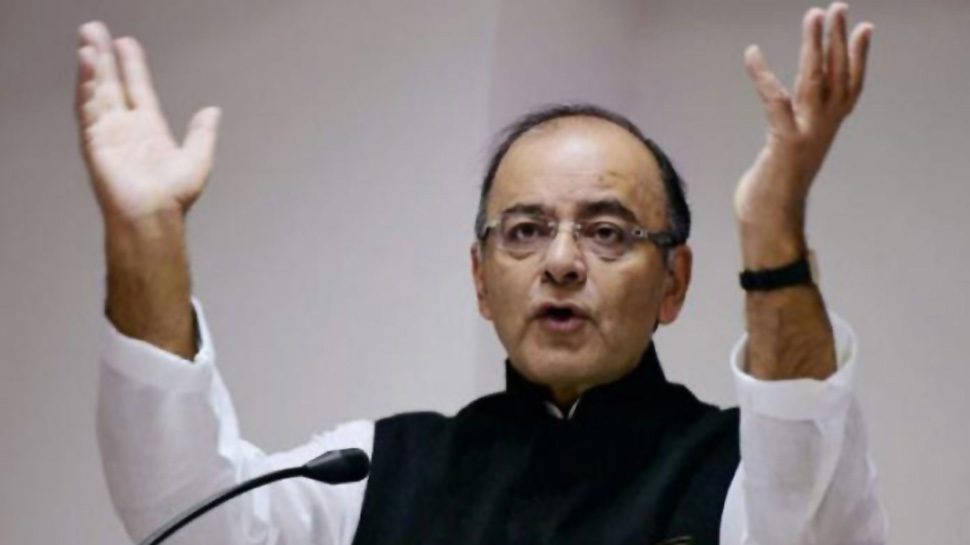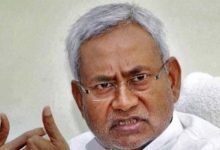The finance minister has put a good many of his eggs in the farmers’ basket. He is betting that India’s farm sector should undergo a transformational change and it should grow far more than traditionally. So he is giving incentives to the farmer, promising higher price for his products and an even promising doubling of his income in another five years. Here’s an analysis of the election budget, for Different Truths.
The finance minister as an opening gambit stated that India’s was the seventh largest economy in nominal terms and third largest in purchasing power parity. Already, we are a $2.5 trillion economy. Even a 5 percent growth would mean adding $120 billion or so to the national income. These are big amounts. With that, the FM seems to have taken a few major steps without bothering too much.
Undoubtedly one of the most ambitious is the health insurance schemes. It has launched a health insurance policy for which the tab will be picked up by the government. The implications could appear mind-boggling. But the burden could be only a deferred liability spread over years of much lower proportions. Why?
All people do not fall sick at the same time. They all do not fall sick as gravely. The government only foots the premiums on the scheme and for such large body of people, the premium should be sufficiently low. Even then, the premium obligation provided for in the budget –Rs. 2000 crore – appear inadequate. But let us not do the nit-picking. Because such a scheme would generate huge activity and business in the insurance sector and the average costs could be low.
 The finance minister has put a good many of his eggs in the farmers’ basket. He is betting that India’s farm sector should undergo a transformational change and it should grow far more than traditionally. So he is giving incentives to the farmer, promising higher price for his products and an even promising doubling of his income in another five years. That five years maybe outside the current horizon of the government, but these steps should help to achieve that goal in 2022 or whenever.
The finance minister has put a good many of his eggs in the farmers’ basket. He is betting that India’s farm sector should undergo a transformational change and it should grow far more than traditionally. So he is giving incentives to the farmer, promising higher price for his products and an even promising doubling of his income in another five years. That five years maybe outside the current horizon of the government, but these steps should help to achieve that goal in 2022 or whenever.
FM had also spoken of other kinds of help to the farm sector, like consolidation and nurturing of markets in rural areas. This is essential if the income of farmers is expected to rise. They grow a crop and do not get a price in the absence of adequate marketing infrastructure. He has spelled out several initiatives for nurturing non-farm activities. This is hopefully likely to create employment in the rural areas, which is so essential for pushing up overall activity.
Secondly, the finance minister has given some small incentives to select sector while keeping the overall tax structure intact. The incentives are more for the creation of a good vibe than really large financial gains to the benefactors. For example, the concessions to senior citizens should not mean large revenue losses for the government but it is a good move and some comfort to the lonely old souls facing rising costs.
Thirdly, the little concession to MSME sector in corporate income tax burden should equally not mean large losses for the government, though it should give some consolation to companies having a turnover of up to Rs. 250 crore. While doing so, the finance minister does not immediately raise tax rates and mop up additional tax revenues, at the same time, the targets to bring down fiscal deficit. How this impossible task will be achieved lies in the budget calculations.
 To assess this budget, one has to remember the context of this budget as well. This is the first budget after the launch of the GST, which means that the finance ministers’ favourite budget gimmick until recently – tampering with the excise duty rates on a host of articles for mobilising additional resources—was not available to him. The excise duties and rates are now set by the GST Council and not by the union finance minister alone.
To assess this budget, one has to remember the context of this budget as well. This is the first budget after the launch of the GST, which means that the finance ministers’ favourite budget gimmick until recently – tampering with the excise duty rates on a host of articles for mobilising additional resources—was not available to him. The excise duties and rates are now set by the GST Council and not by the union finance minister alone.
From this standpoint, this budget is so refreshingly different from budgets of yesteryears when the finance ministers would be obliged to attempt a massive additional tax revenue mobilisation to meet contingencies from a litany of woes. This is possible because, after all, the economy is growing at a comfortable pace. Because of this, Jaitley is a confident man.
How he will balance his books and achieve his targeted level of fiscal deficit is a common trade secret of all finance ministers. All budgets are constructed on the basis of projections of a certain rate of growth of the economy and a rate of inflation. Jaitley has assumed the Indian economy should continue to grow at between 7% and 8% and this should provide the revenue buoyancy. The finance minister assumes revenue buoyancy as in the current year. Tax revenues have increased by over 18% during the current year and obviously, he hopes this would be repeated next year as well.
Additionally, he has put a high target for non-tax revenue receipts. At least Rs80,000 crore for 2018-19 against close to Rs1 lakh crore this year. Additionally, there will be some other weapons in the armoury—like receipt of voluntary savings in government bonds from the public. Buoyancy in small savings receipts this year helped the Union government to cut down its borrowing programme.
The budget this year is a narrative of a prospering country which is not exactly cowed down by its litany of woes and counting its pennies. It is a forward-looking and positive budget, which is an attempt at a big transformation. The finance minister referred to the general buoyancy in the economy and growth record. Hence, given the experience of the Indian economy’s performance, he is not reserved in taking up large commitments.
Questions have been raised by the government’s promise of creating jobs for the young population. While there are no exact schemes for job creation, however, the general thrust of the budget and of the policy of giving emphasis on non-farm activities in the rural areas – like food processing and nurturing the growth of horticulture sector—should result in major job creation in the rural areas.
Two other thrusts should also create more jobs in future. First, infrastructure building and housing projects should create a large number of jobs if these are implemented in full measure. The demand generated from such large-scale activities should also give rise to enough traction for overall activity in the economy.
Second, the budget also introduces a package of measures for development of the financial sector. The growth and proliferation of services activities should be useful for creation of jobs on a sustained basis than only job creation schemes like MNREGA.
In a way, the budget is a blueprint for a forward-looking economy and growth of the economy. It should carry the process of sustained growth much further and the Indian economy could hit a high trajectory. For the critiques, this is finance minister’s jumbled manipulation in the foreground to an election – this year-end or early next year.
Anjan Roy
©IPA Service
Photos from the Internet
#Budget #Bluprints #IndianFinanceMinister #EconomyOfIndia #TaxAndRevenues #Farmers #IPA #DifferentTruths





 By
By
 By
By

 By
By